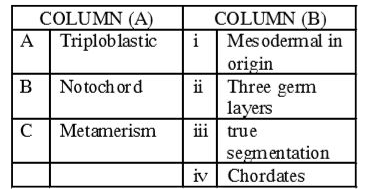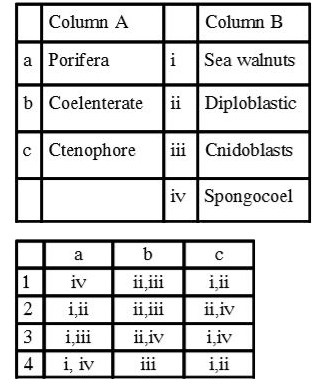Choose the correct answer from the options given below :
In the periodic table alkali metals are placed in the group. ........... .
1
11
17
18
To solve the question regarding the placement of alkali metals in the periodic table, we can follow these steps:
1. Identify Alkali Metals:
- Alkali metals include Lithium (Li), Sodium (Na), Potassium (K), Rubidium (Rb), Cesium (Cs), and Francium (Fr).
2. Locate the Group in the Periodic Table:
- Alkali metals are known to be located in a specific group in the periodic table.
3. Determine the Group Number:
- Alkali metals are placed in Group 1 of the periodic table. This is because they have one electron in their outermost shell.
4. Understand the Electronic Configuration:
- The general electronic configuration for alkali metals is ns¹, where 'n' represents the period number. This indicates they have one electron in their outermost shell, which corresponds to Group 1.
5. Conclusion:
- Therefore, the correct answer to the question is that alkali metals are placed in Group 1.
Final Answer:
- Group 1
---
- Alkali metals include Lithium (Li), Sodium (Na), Potassium (K), Rubidium (Rb), Cesium (Cs), and Francium (Fr).
- Alkali metals are known to be located in a specific group in the periodic table.
- Alkali metals are placed in Group 1 of the periodic table. This is because they have one electron in their outermost shell.
- The general electronic configuration for alkali metals is ns¹, where 'n' represents the period number. This indicates they have one electron in their outermost shell, which corresponds to Group 1.
- Therefore, the correct answer to the question is that alkali metals are placed in Group 1.
- Group 1
Topper's Solved these Questions
- PERIODIC PROPERTIES AND VARIATIONS OF PROPERTIES (PHYSICAL AND CHEMICAL) BOOK - ICSECHAPTER - PERIODIC PROPERTIES AND VARIATIONS OF PROPERTIES (PHYSICAL AND CHEMICAL) EXERCISE - Questions from Previous ICSE Board Papers (2012)
7 Videos
- PERIODIC PROPERTIES AND VARIATIONS OF PROPERTIES (PHYSICAL AND CHEMICAL) BOOK - ICSECHAPTER - PERIODIC PROPERTIES AND VARIATIONS OF PROPERTIES (PHYSICAL AND CHEMICAL) EXERCISE - Questions from Previous ICSE Board Papers (2013)
9 Videos
- PERIODIC PROPERTIES AND VARIATIONS OF PROPERTIES (PHYSICAL AND CHEMICAL) BOOK - ICSECHAPTER - PERIODIC PROPERTIES AND VARIATIONS OF PROPERTIES (PHYSICAL AND CHEMICAL) EXERCISE - Questions from Previous ICSE Board Papers (2010)
4 Videos
- PART B (STIOCHIOMETRY) PRECENTAGE COMPOSITION - EMPIRICAL & MOLECULAR FORMULA CHEMICAL EQUATION CALCULATIONSBOOK - ICSECHAPTER - PART B (STIOCHIOMETRY) PRECENTAGE COMPOSITION - EMPIRICAL & MOLECULAR FORMULA CHEMICAL EQUATION CALCULATIONSEXERCISE - Questions (G : Chemical Equations)
17 Videos
- PERIODIC PROPERTIES OF ELEMENTS BOOK - ICSECHAPTER - PERIODIC PROPERTIES OF ELEMENTS EXERCISE - QUESTIONS FOR PRACTICE ON EXAMINATION PATTERN (SECTION II)
70 Videos
Similar Questions
Knowledge Check
Choose the correct answer from the options given below :
A compound with low boiling point, is :ASodium chlorideBCalcium chlorideCPotassium chlorideDCarbon tetrachlorideChoose the correct answer from the options given below :
The acid which can produce carbon from cane sugar, is :AConcentrated Hydrochloric acidBConcentrated Nitric acidCConcentrated Sulphuric acidDConcentrated Acetic acid
Select the correct statement from options given below.
View SolutionChoose the correct answer from the options given below: The catalyst used in the Contact Process is :
View SolutionChoose the correct answer from the options given below :
Anhydrous iron(III) chloride is prepared by:
View SolutionChoose the correct answer from the options given below :
The brown ring test is used for detection of :
View SolutionMatch the columns and choose the correct answer from the options given below

View SolutionMatch the columns and choose the correct answer from the options given below

View Solution
